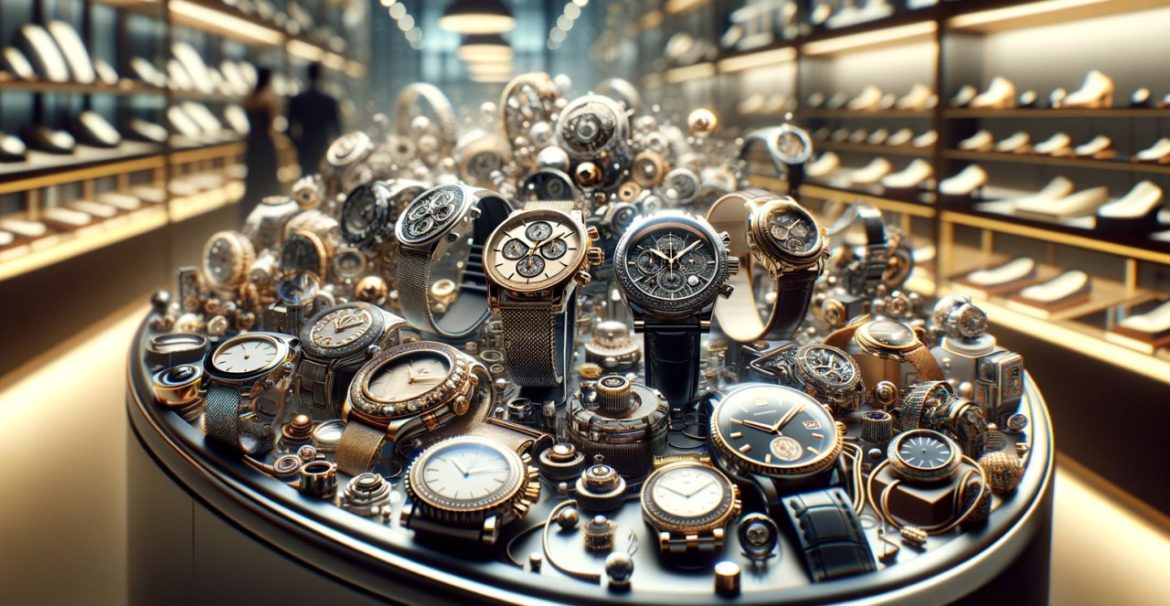Online sites seduce readers with clickbait titles on how to easily invest in luxury watches . A sector that is much more complex than it seems, and where it is better not to take anything for granted. Not to increase your capital but to combine a true passion for wristwatches with the idea of buying something that does not lose value over time. We talked about it with Marisa Addomine, Senior Advisor Antiques and Clocks&Wa-tches, and expert at Mercanteinfiera in Parma .
L’OFFICIEL: When is a watch antique, vintage..?
MARISA ADDOMINE: There are no clear definitions, the very concept of antique (protected by law) moves from country to country. In Italy, antique means that it is more than 70 years old, while the definition of vintage is much more vague. It embraces what is between the Second World War and the 70s/80s, but it is not a precise definition. Vintage also borders on «second wrist», quality used.
LO: What characteristics determine the value of a watch?
MA: The brand, the model, the rarity of the watch, the caliber, the material (platinum, for example, costs less than gold, but watchmakers always make a small number of platinum timepieces), and who it belonged to. The latter is a psychological springboard; buying it is as if you could take possession of the owner’s soul. And it is a phenomenon that cuts across the board in collecting (which must in any case be documented in a certain manner).
LO: What does the market require today?
MA: Perfection. The more intact the object, the more it is free from criticism. In particular for the collector from the Far East who otherwise will not buy it. And, in general, buying the faultless is already a priori an excellent strategy for those who also have an eye for the invested capital. The slight defect, the sign of use… emerge tragically in a hypothetical resale. There must also be the watch accessories, if possible. The bracelet (once the bracelet was changed often), the buckle and the original clasps. And also the box, the packaging and the accessories. And the guarantee (sometimes counterfeited), which must have the same number and reference.
LO: No charm of the lived?
MA: We do not make the market, it lives by its own laws and rules, which evolve over time. The defects are visible, as is the restoration. Even though there are extraordinary restorers, everything that is surface treatment does not remain identical, it has a different aging compared to the original materials.
LO: Are there no exceptions? MA: There is a quality even in fakes, Rolexes are terribly counterfeited. «Frankensteins» are assemblies of their parts, perhaps original, but it’s like a recomposed corpse.
MA: The wristwatch is designed to be worn, lived; by its very nature it should accompany the owner throughout the hours of the day. In particular, with regard to automatic watches, a certain use with grace should be guaranteed. When it goes beyond its function, with the growth of its complexity and economic value, one finds oneself faced with a dilemma. Limit the risk and keep it only as a mere investment?
LO: So in a safe?
MA: A famous Patek Philippe advert said «you don’t own it completely, you just keep it». Like a work of art, if you display it you run risks, a theft, a fire. However, it is also legitimate to ask whether the owner of a Van Gogh can keep it in a safe. But if I want to look at it as a pure investment, I buy it new, immaculate, with the certificate, which for the collector is a kind of Holy Grail and I keep it. I don’t enjoy it, I don’t live it.
LO: For over twenty years you have been responsible for appraisal services for Mercanteinfiera, what does that mean?
MA: I help buyers who want to buy and be informed. I deal with everything that has to do with appraisal, with absolute confidentiality, in what is the largest covered fair in Europe. At the back of pavilion 6 there are the specialists in wristwatches, both Italian and foreign. And it is a particularly fertile hunting ground, because so many professionals participate; it is a unique opportunity to see dozens of important traders, one next to the other, and a huge offer. It is important to deal with a serious and competent trader, who obviously knows what he has in his hands.
LO: And who is looking for a deal?
MA: Even the buyer has to study. The more you know, the more you can establish a dialogue, and the seller is also happy to find a knowledgeable buyer. You discuss, you talk, it almost becomes a transfer of ownership between colleagues. If you don’t know anything about it, you have to go to someone serious, «pay the price», which means paying the right amount. At the beginning you have to move carefully, then as you learn you climb higher, watching carefully where you put your feet. There is also Gladstone, Donald Duck’s lucky cousin, but since it is a rich market there are also unscrupulous people.
LO: When did you start to get interested in watches and their history?
MA: I am the daughter of a watch collector and an antique dealer. And I was an electronic engineer for 25 years, then the passion for watchmaking was reawakened — never abandoned.
LO: One last piece of advice?
MA: The more you learn, the more likely you are to be blessed with good fortune. But collecting is a disease, without vaccines.

